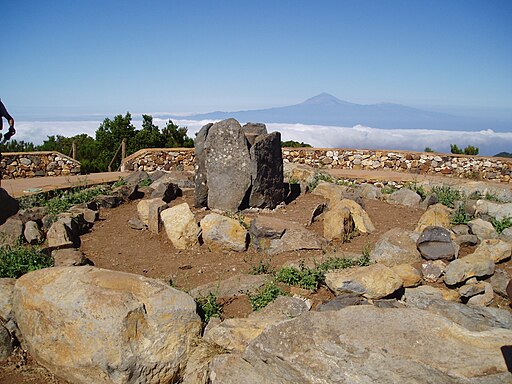For decades, the diet of the aboriginal peoples of the Canary Islands, in times before the Conquest, has been debated. The archaeological investigations carried out in the last years, have allowed to clear some doubts on this subject.
Chemical techniques have been used for the reconstruction of the diet. The food contains chemical elements (strontium, zinc, calcium, selenium …) that after being ingested are stored in the bones in variable concentrations. By determining their quantities in the archaeological bone, the diet of the individual can be reconstructed.
Thus, high levels of strontium suggest a predominantly vegetarian diet, and the same occurs with manganese, magnesium, cobalt and nickel. On the contrary, high levels of copper, zinc, molybdenum or selenium are associated with a diet rich in animal proteins.
But, what exactly was your diet and what aspects have been considered to collect this information?
In general, we could say that the ancient inhabitants of the Islands had a balanced diet and an active life.
Meat, dairy products, legumes, fruits, tubers and sea products were part of their diet, although not always in the same proportions. On the northern slope of the Canary Islands the consumption of vegetables was higher while the south was more livestock and consumed more meat.
They preferably consumed meat, milk and dairy products (cheese and butter). The importance of livestock for the aboriginal population was such that most of their wars and fights were for cattle robbery or for entering the domains of the other.
To a lesser extent, they fed on the collection of cultivated or wild plants, cereals such as barley or wheat, legumes such as lentils or beans, seeds, yew or heather pollen and fruits, fish like the old, the sargo, the cabrilla or the moray, molluscs, crustaceans and products such as gofio. The meat came mainly from goats, sheep and pigs. The fruits of the Canarian palm tree have also been recovered from different pre-Hispanic enclaves.
Recent studies have shown that Canarian aborigines also practiced arboriculture, cultivating species such as the fig tree.
Sporadic and in times of scarcity consumed lizards, birds, cats or rodents as a giant rat race now extinct that reached the size of a rabbit.
To determine the diet of the aboriginal populations of the Canary Islands, remains of animals and plants (bones, shells, seeds, etc.) recovered from archaeological sites (caves, sacrificial aras, funerary sites) have been identified. It has been studied the dentition and its pathologies or dental wear, which are good indicators of the type of food they consumed.

